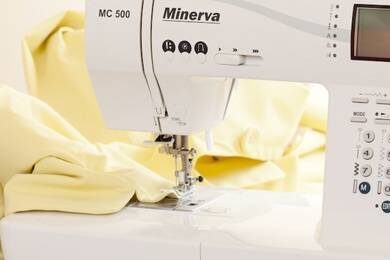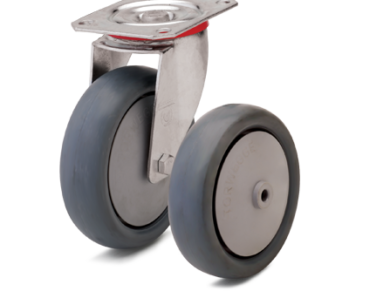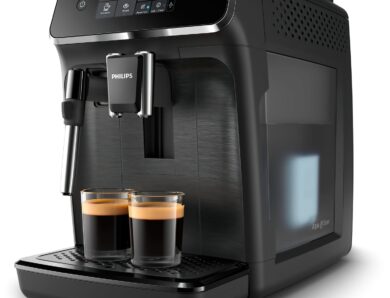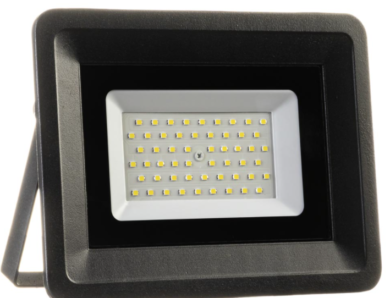Why does an inkjet or laser printer print in stripes, and what to do in this case
Be-printer, be it laser or inkjet, in the process of operation, it reaches such a stage of its work, when print quality deteriorates. Printed pages become dull, horizontal or vertical stripes appear on the sheet, the image is printed with spaces (in places there is no filling) etc. All these troubles can appear for various reasons, which depend on the printing technology, which is used in devices. For a laser user, these are problems with the cartridge or drum, and for the jet streamer, if it prints with stripes - malfunctions in the print head, ink failure.
"Striped" print defects on an inkjet printer
There are not so many reasons for the appearance of "striping" on the sheets that came out of the printer.
A production defect cannot be ruled out, especially, if your newly purchased device starts to draw stripes.
But, if before the appearance of this defect, your unit was printing well, ??then in most cases, the problem is solved at home, and you can do without a trip to the service center.
Check the ink level
First of all, the ink level should be checked on the inkjet printer. You can use software to determine the paint level, namely a utility, which is equipped with any printing equipment. Example, to determine, to what extent the resources of cartridges in HP equipment have developed, you need to run the program, designed to control the device, and select the "Approximate Ink Levels" tab. The utility window is shown in the figure below.
For Epson units, the window will look like this:
When the ink level in the cartridge reaches zero, it must be refueled, or exchange for a new one.
If a CISS is connected to the printer, this program will be useless. The ink level is easily determined, if you look at the transparent CIS containers. If they have enough paint, then you should check the loop, according to which the ink enters the cartridge. It should not contain bends, the tubes of the loop should not be pinched by something, and they should not have air pockets (small areas with air). You should also check the air filters on the CISS containers. If they are clogged with dust or paint, then there will be no air suction in the container, and ink from these containers will stop flowing to the head, which will cause the appearance of stripes when printing.
Head cleaning
It is very important for inkjet printers, so that there are no downtimes in work. Otherwise, due to a long pause, the ink in the print head dries up and clogs the nozzles - holes, through which the paint is sprayed onto the paper.
In some models of printing equipment, the print head can dry out after a couple of days of equipment downtime.
But for most devices, so that the ink in the nozzles dries, required from 1 to 3 weeks. In any case, you need to turn on the device regularly, so that it can "blow" the nozzles with ink.
In modern printers and BFPs, the manufacturer has provided for the possibility of cleaning the print head by means of the device itself, using a proprietary utility. Example, for HP this feature is called "Cartridge Cleaning".
In Epson printers, this function is called "Cleaning the head". Also, these programs allow you to make a preliminary check, which allows you to determine from the print, are the nozzles really clogged?. Such a function is useful in order to use the ink as efficiently as possible, because when cleaning the head there is an increased consumption of paint: nozzles are washed with ink.
For Canon devices, to clear the head, in the utility window, you need to click on the "Cleaning" item, or "Deep cleaning" is a more advanced type of cleaning, with high ink consumption.
If the printer prints in stripes, it is recommended to repeat this procedure consecutively 2-3 times, and let the device "settle" for a couple of hours, after which it can be used as intended.
If the hardware cleaning did not help, then you will have to resort to manual washing of the print head, as shown in this video.
If the inkjet head is built into the cartridge, then it is recommended to soak the nozzles in Mr. Muscle glass cleaner for at least a day. Preferably, so that the liquid is green or blue in color. The nozzles should be soaked as follows, so that the detergent does not get on the electrical contacts. After soaking, carefully wipe the nozzles with a napkin, insert the cartridge into the printer, and run the standard cleaning procedure, which was described above.
It is not recommended to soak and wash the inkjet head from the Epson printer at home, because she is very "moody", and it can easily be rendered unusable. The price of a new head can be compared to the price of a new printer. So, if there is a suspicion that, that the nozzles have dried up, it is better to contact the service center.
Problems with encoder tape and disk
Also the reason for that, that a white band appears when printing, which is repeated at the same distance, there may be blockages on the encoder disk. It is usually located on the left side of the unit on the paper feed shaft. The disk is made of transparent plastic and has a special marking.
When there is dust on the disc markings, paint or other contamination, then the optocoupler sensors are not able to read the information correctly, and the paper is not positioned correctly. To clean the disk, you can also use the tool "Mr. Muscle". Importantly, that this product was intended for washing glass and contained ammonia.
Carriage, into which the cartridges are inserted, is positioned along the encoder tape. It is a transparent strip of plastic with strokes applied on it. It is located near the back wall (inside the device).
If dirt gets on the tape, then the correct positioning of the carriage is lost, and the text or image is shifted to the side when printing, at regular intervals. Wipe this tape with the same tool, as well as the encoder disk. Just be careful during this procedure. If the tape comes off the fasteners, then, to set it in place, half of the device will have to be disassembled.
Importantly! Acetone and other solvents cannot be used to clean the encoder disk or tape, as this can erase the markup.
Why does a laser printer print in stripes
First, than looking for the reason for that, why laser strip printing machine, it is necessary, at least at the minimum level, to have an idea of the structure of the unit. It is clearly visible in the following picture.
When printing on a laser printer, the following reasons can provoke the appearance of stripes:
- damage to the photo drum;
- violation of contacts between the magnetic shaft and the photo drum;
- the toner has run out;
- damage to the magnetic shaft;
- cartridge leakage;
- overflow of the waste hopper.
damage to the photo drum
The photo drum is an aluminum shaft, which has a special coating, which has sensitivity to optical radiation. Only the outer layer is sensitive to laser radiation, which later becomes thin and wears off in some places.
Even if wear is not visually determined, the thinning of the active layer still affects the print quality. In this case, black stripes appear on the edges of the sheet. As the active layer on the drum wears, the bands will widen.
It should be noted, that the toner consumption in these places will be higher, because the thickness of its layer on the drum will be high. As a result, other parts of the cartridge or the printer itself may fail, example, thermocouple.
Although there is a method of restoring the active layer on the photo drum, it is not efficient enough. The best way out of this situation will be to replace the part with a new one.
Violation of contact between the magnetic shaft and the photo drum
If a letter comes out of the printer, which has horizontal stripes, located at the same relative distance from each other, then this is a sign of poor contact between the photo drum and the magnetic shaft.
Such a nuisance arises, when the toner wakes up, or the waste hopper overflows. Also, this defect can occur after unqualified filling of the cartridge or wear of the shaft, squeegee, photo drum. The problem is solved by replacing the failed nodes or refilling a high-quality cartridge.
the toner has run out
About that, that the cartridge has run out of toner, can be understood, if white streaks appeared on the sheet, which have different widths.
What to do if the toner has run out? The answer is obvious: replace or refill the cartridge.
Damage to the magnetic shaft
The main purpose of the magnetic shaft is to transfer the toner to the photo drum. Because the toner has abrasive particles, it is because of them that the wear of the magnetic shaft occurs.
When the magnetic shaft is damaged, the following printing defects become noticeable:
- white voids appear on the sheet;
- gray spots appear, evenly spaced on the paper;
- pale print;
- uneven filling of the image.
Also, with a damaged magnetic shaft, horizontal wavy stripes may appear.
This problem is solved only by replacing the shaft.
cartridge leakage
About that, that the tightness of the cartridge is broken, vertical stripes indicate, are located chaotically, and each time in a new place.
Temporarily removing the ink cartridge from the device and check, does the toner spill out of it?. If so, then this element should be checked for mechanical damage, rubber seals are well inserted, that prevent the toner from spilling out. When cracks and other insurmountable damages are detected, the cartridge needs to be replaced.
The waste hopper is full
The cartridge includes a squeegee, which removes unused toner. The latter is disposed of in a special container, which is called a waste hopper. This compartment is usually cleaned when replacing the cartridge. If the hopper is not cleaned, then it overflows with toner, which will be poured outside. The following figure shows, what effect is caused by overflowing the waste compartment.
By the way, such a black bar appears, if the squeegee (blade, cleans the drum) worn, distorted, or a foreign object got under it, example, clip.
The squeegee has the appearance, as in the picture below.
To get rid of the printing defect, you will need to clean the waste hopper or replace the blade.




